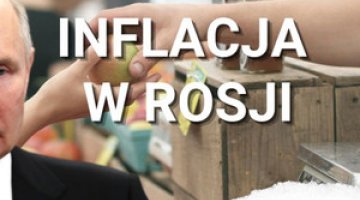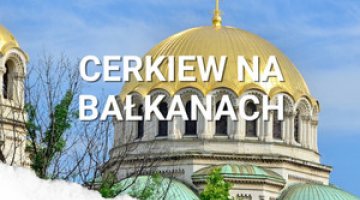Russia’s crisis budget for 2016
On 4 December the Russian State Duma adopted a draft budget for 2016 at the third reading. The budget’s key assumptions are quite optimistic; if we take into account the scale of Russia’s economic problems, then the budget could undergo major adjustments during 2016, primarily further spending reductions. The dynamics of these reductions will largely be determined by the electoral calendar between 2016 and 2018. The priority given to spending on security & defence and social policy indicates the Kremlin’s intention of continuing its present course in foreign and domestic policy. The authorities still have a ‘safety cushion’ in the form of obtaining additional revenues and reducing expenses, but their actions will probably weaken the country’s prospects for emerging from recession.
The budget’s key assumptions
The annual average price of oil, which is fundamental to Russia’s budget planning, has been estimated at US$50 per barrel. The multitude of factors which will determine the dynamics of oil prices in the short and medium term makes this difficult to forecast, but this value seems too optimistic against the background of the current level of prices for Urals crude (about US$40 per barrel) and the cautious forecasts by the Russian Ministry of Finance, which believes it likely that oil prices will fall below $40 per barrel. If oil prices do continue below the average budget forecast, one hope for the budget’s stability may come, on the one hand, from the ‘devaluation bonus’ resulting from the higher than planned (63.3) exchange rate of the rouble to the US dollar and on the other from the higher than planned inflation rate (6.4% in the draft budget, while in October this year it was running at 15.6% year on year, which makes such a significant reduction practically impossible).
The assumed budget deficit has been based on a GDP level of 3% (which seems to be a secure assumption with regard to the sustainability of public finances), but it may well increase during the period of the budget’s implementation. The Ministry of Finance has pointed out the risk of a shortage in revenue of 1.2-1.5 trillion roubles (US$17-21 billion), caused among other factors by an overestimated GDP growth level in the draft budget (+0.7%, whereas most forecasts have predicted a recession). The Ministry has also highlighted the scale of the demands from the loss-making state corporations, primarily Vneshekonombank (which may need as much as 1.5 trillion roubles) involved in financing unsustainable investments of political importance (such as the Winter Olympics venues).
The planned deficit is expected to be financed almost entirely from the Reserve Fund (its resources during 2016 are estimated to fall from 3.4 trillion roubles to 1 trillion roubles). Additional funds may come from foreign loans and an increase in internal debt (currently planned at 300 billion roubles and US$1.5 billion net). These relatively small sums indicate the government’s cautious approach, which is conditioned on the costs of servicing the debt in a situation of persistently low investment ratings for Russia, despite the favourable public -debt to GDP ratio (the Ministry of Finance’s debt forecast for 2016 is 15.6% of GDP). The balance of the National Welfare Fund, which is another potential source of financing the deficit, is projected to remain at around 4.6 trillion roubles at the end of 2016.
The most important budgetary expenditures
The main points of contention that emerged during the many months of debates on the budget were the scale of spending on defence and the institutions of force, and the scale of cuts in social and pension spending. The Ministry of Finance was defeated on the first issue; its proposal to reduce the budget deficit to 2.8% by spending less on the military and national security was rejected. In the version which was adopted, these sectors will consume 32% of budget expenditure (of which expenditure on the army will amount to 3.14 trillion roubles, or 4% of GDP), thus slightly less than the figure for 2015 (33%). Social spending will rise slightly (to 27.6%), wherein the most important social decisions relate to transfers to the budget (for the third year in a row) of part of the pensions’ capital and the indexation of pensions at a rate well below inflation (4%), although the Duma has committed the government to a re-indexation based on the financial results from the first half of 2016. The share of spending on education and health will be reduced to around 3.5% and 3% of total budget expenditure, compared with 4.1% and 3.4% in 2015. It is noteworthy that the share of the budget to be spent on mass media will remain almost unchanged (0.5%), and funding under the heading of ‘national economy’ will rise (from 14.7% to almost 16%). The latter includes subsidies on inefficient industrial development programmes and the loss-making national railways.
The decision was made to ring-fence a sum of 1.1 trillion roubles in the budget (more than half of this sum will remain at the sole disposal of the president and the government), which can be used for quite generally defined objectives: support for the economy, social assistance, support for regional budgets, or humanitarian aid for citizens of other countries.
What are the implications of the budget?
Compared to previous years, an important change in drawing up the 2016 budget was the withdrawal from the principle of three-year budgetary planning originally introduced in 2007. The government justified this change by the limited possibilities for macroeconomic forecasting, due to the unpredictable fluctuations in global markets, especially of the oil prices, which are so crucial for Russia. Despite narrowing the fiscal planning horizon to one year, uncertainty about the economic situation is still apparent in the budget calculations. It is also clear that room for manoeuvre is being prepared to mitigate the effects of the crisis as flexibly as possible. Among other things, the arbitrary use of the budget reserve will probably allow ‘targeted’ financial injections to be made into industries which the government considers important with regard to socio-political stability in the country.
The optimistic budget parameters indicate its political and propaganda function, which will most likely be strengthened as elections to the State Duma (September 2016) and the presidency (2018) approach. This is reflected in plans for the additional indexation of pensions shortly before the parliamentary elections, and the desire to postpone difficult decisions (such as raising the retirement age and increasing taxes) to the period after 2018. The government will likely seek to maintain the ‘iron’ reserve in the form of the National Welfare Fund until the elections in 2018, which may encourage it to raise the state debt in the light of the shrinking Reserve Fund.
The shape of the budget (the scale of spending on the institutions of force and on social policy, at the expense of investment in human capital) indicates the care the authorities are taking with Putin’s core electorate (which is made up of social groups dependent on financing from the state budget). It also proves their determination to continue Russia’s expansionist foreign policy and authoritarian domestic policy in the run-up to the elections in 2016 and 2018, as well as in the light of the tense geopolitical situation. Although the document reflects the conditions of crisis in which the Russian state has been functioning since 2014, the authorities still have a considerable ‘safety cushion’. They will probably look for possible sources of additional funds in increasing the debt; making manoeuvres with the tax system and reducing the scale of tax breaks; a moderate reduction of subsidies for state-owned enterprises and some of the regions; tightening the criteria for receiving social assistance, or putting investment plans on hold. Such activities will help the government to survive economic turbulence, but they will significantly weaken the prospects for economic development in the coming years.





